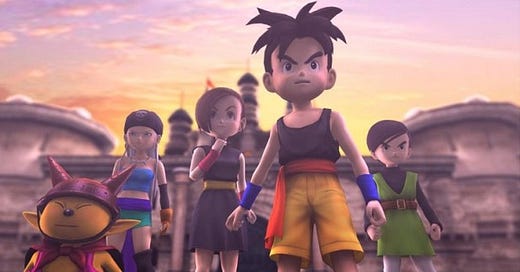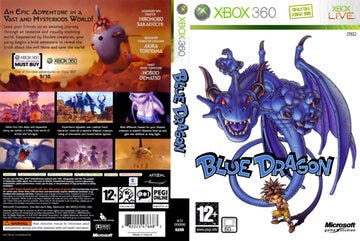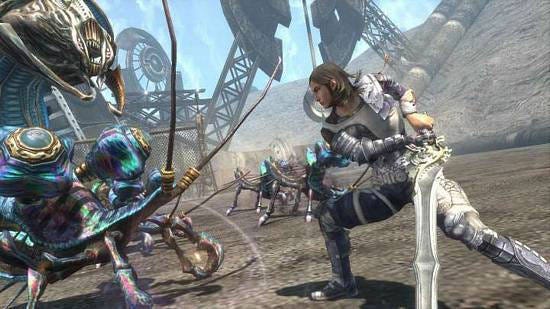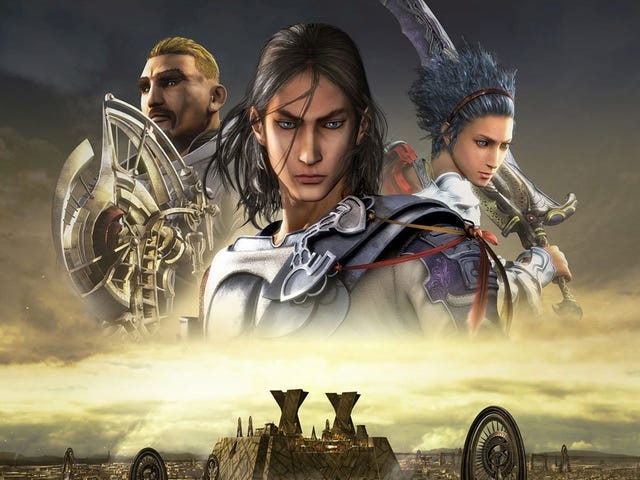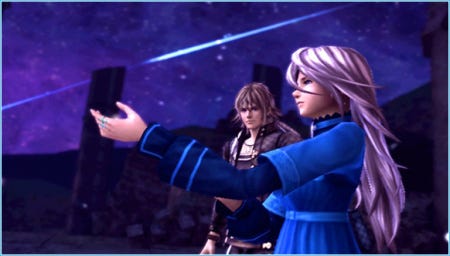Journey into Mistwalker
Final Fantasy creator Hironobu Sakaguchi rode the JRPG waves of the late 2000s like it was the 1990s
Hironobu Sakaguchi could easily be called the Shigeru Miyamoto of JRPGs—if Miyamoto traded plumbing for potions and turn-based battles. Sakaguchi is the mastermind behind the Final Fantasy series, with the “Final” part originally meant to mark his last hurrah in the gaming industry... 30 years ago. Turns out, it wasn’t very final. He went on to direct four sequels and played a pivotal role in two of the most beloved entries: Final Fantasy VI and VII.
Then came Final Fantasy: The Spirits Within, a CGI movie that looked great but bombed harder than a Meteor spell. The fallout saw Sakaguchi step down from his lofty post at Square (now Square Enix). But he wasn’t done yet. In 2004, he founded Mistwalker, a studio with big dreams, and surprisingly, a partnership with Microsoft—back when they briefly remembered Japan existed. Mistwalker’s debut for the Xbox 360 produced two of the console’s finest JRPGs: Blue Dragon and Lost Odyssey.
Blue Dragon is as classic as it gets: ragtag heroes, evil overlord, massive world, and turn-based combat. It ticks every JRPG box with confidence. But it also brought a few new tricks to the table. It was among the first 3D JRPGs on the 360, and it flaunted the distinct art style of Akira Toriyama, whose spiky-haired fingerprints are also all over the Dragon Quest series. Add in a sweeping score from legendary composer Nobuo Uematsu—who also jumped ship from Square to join Mistwalker—and you’ve got yourself a dream team.
At launch in 2006, Blue Dragon gave Xbox 360 sales a much-needed Phoenix Down in Japan, shifting over 167,000 copies in just 10 weeks. That’s a big deal, especially for a console brand that now sells in Japan like snowboards in the Sahara. Lifetime sales of Blue Dragon hover around 920,000 units globally, with Japan and Europe doing most of the heavy lifting.
“Microsoft sold 35,343 Xbox 360s – an increase of nearly 90 per cent over the previous week... It’s likely that the rise was linked to the release of Blue Dragon...”
— Ellie Gibson, GamesIndustry.biz
Critics sometimes called it too traditional—code for “not trendy enough”—but it had clever updates. No random encounters here: enemies appeared on screen, and if you snuck up on them, you got the first hit. It wasn’t revolutionary, but it didn’t need to be. It came on three discs and easily clocked in at 60+ hours—real value for your gil.
In contrast, Final Fantasy XIII, with all its glitz and corridors, sold over two million units (half in the US) but was largely panned. Blue Dragon may have looked like an anime action figure set, but under that Saturday morning exterior beat the heart of a grand adventure. Anime fans got their Toriyama fix, and JRPG fans got the gameplay they craved.
Blue Dragon spawned a franchise, complete with an anime series and two sequels. Mistwalker turned to Nintendo, bringing Blue Dragon Plus to the DS—a real-time strategy spin-off that kept the Toriyama visuals and characters but leaned into gameplay reminiscent of Final Fantasy XII: Revenant Wings. It shared DNA with other DS RTS-RPG hybrids like Heroes of Mana and Lost Magic.
Then came Blue Dragon: Awakened Shadow, which added player-created characters à la Dragon Quest IX while keeping the real-time combat. It didn’t break records, but it was solid, experimental, and showed Mistwalker’s willingness to evolve the genre.
If Blue Dragon was traditional, Lost Odyssey was ambitious. Another Xbox 360 exclusive, this four-disc epic delivered stunning visuals, deep lore, and a storyline that still gets name-dropped by fans who'd rather forget Final Fantasy XIII ever happened. (It was a day off work wasted.)
Yes, Lost Odyssey brought back random battles, but it added a clever twist: timed button presses during attacks for extra damage—because mashing “A” just isn’t heroic enough anymore.
But the real gem was the story. Lost Odyssey follows Kaim, an immortal warrior haunted by forgotten memories. It’s touching, terrifying, funny, and unforgettable—basically everything XIII tried to be but got lost somewhere between Lightning’s scowl and Hope’s whining.
Post-DS, Mistwalker stuck with Nintendo and released The Last Story for the Wii, which turned out to be the console’s swansong RPG. This was Sakaguchi’s first directorial return since Final Fantasy V—yes, 1992 called, and it wanted him back. Still not available on the Nintendo eshop (ahem), this exclusive showed he still had the magic touch.
Set on Lazulis Island, The Last Story checks the usual boxes—war, powers, a boy-meets-girl world-saving plot—but delivers them in a tight, streamlined package. No grinding needed. Just 20–30 hours of fast, real-time action, easy-to-learn controls, and even multiplayer. Compared to the bloated Final Fantasy titles of the era, The Last Story proved Mistwalker wasn’t just holding the JRPG torch—they were innovating with it.
While Final Fantasy, for a time, may have drifted into self-parody and lightning-based brooding, Mistwalker quietly carried the JRPG spirit forward. With Blue Dragon, Lost Odyssey, and The Last Story, Sakaguchi reminded us why we fell in love with the genre in the first place. Traditional, yes—but never stale. And sometimes, that’s exactly what the genre needs.

